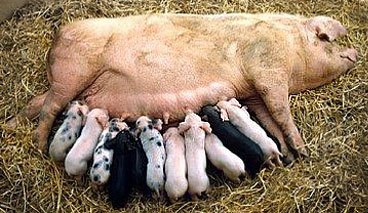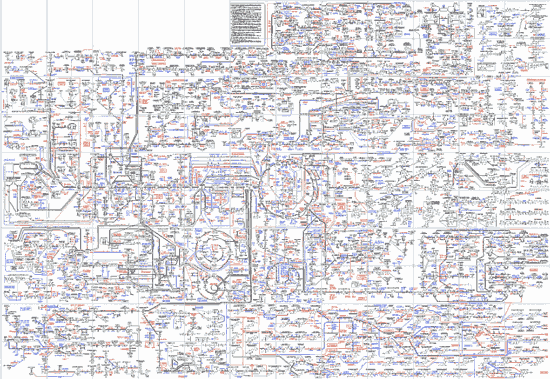 |
Phenotype = Genotype + Environment + Interactions Phenotype = Genotype + Health + Feeding + Housing + Management + Climate |
There are also interactions between the genotype and the environment including between genetics and health. Potentially, this could be exploited by having pigs that are genetic resistance to disease - this has long been promised as a ‘holy grail’ for the global pig industry.
Differences in breed susceptibility have been reported for several diseases, including Sarcocystis infection, Foot and Mouth Disease (FMD) and African Swine Fever (ASF). In outbreaks of the latter it has been reported that wild African native pigs (warthog and bushpig) show no clinical effect. There is also some evidence that locally adapted breeds show resistance (a good reason for supporting the conservation of traditional breeds!).
There is also evidence of within-breed variation for several diseases including ASF, Atrophic rhinitis, Aujeszky’s, PRRS, PCVAD (Porcine Circovirus Associated Disease), respiratory disease and Salmonella.
The pig has some 20,000 genes (we still do not know the exact number) which control all the functions of the body through complex biochemical pathways.
The genes control all the functions of the body through complex biochemical pathways.

Source: Roche – see http://www.expasy.ch/cgi-bin/show_thumbnails.pl
Most functions are controlled by several or many genes so that the genetic control of disease resistance is highly complex. Of particular importance are the cell surface proteins which play the major role in the control of immune response. The major histocompatability (MHC) gene complex codes for these cell molecules and is involved in the recognition of invading organisms and foreign tissues. In the pig the MHC is associated with the swine leucocyte antigen (SLA) system. Interestingly, the SLA also has a close association with many reproduction traits including ovulation rate, pre-implantation mortality, embryo survival and litter size.
Numerous studies have identified differences in immune response across a range of parameters between breeds and between pigs reared under the same environmental conditions. However, it should be noted that modern management systems which include vaccination, preventative medicine and barrier maintenance may have nullified the evolutionary selective advantage of immune responsiveness. Similarly, maternal antibodies via colostrum may interfere with active immunity. Despite these ‘problems’ several research groups are using different genetic ‘lines’ selected for high versus low levels of immune traits such as antibody production and cell-mediated immune responses. In Canada, high-responder pigs developed higher vaccine responses, grew faster, and had lower disease scores following infection with mycoplasma. However, the high level pigs also had larger arthritis scores, probably due to differences in cytokine production between the selected lines.
Finally, a few important health functions are controlled by a single set of genes. These are called major genes. Examples are the halothane gene and two E. coli genes.
Nearly 50 years ago field observations suggested that only some litters in the farrowing house were affected with K88 E. coli diarrhoea while other litters remained healthy despite close proximity. Similarly, it was observed that the progeny from certain boars appeared more susceptible. In order to cause scouring the bacteria have to adhere to the gut wall by means of surface antigen which attaches to a receptor on the intestinal wall of the pig. Some pigs do not possess the receptor so that the bacteria cannot attach and there is no disease. This non-adherent factor is inherited as a simple recessive gene. Passive maternal protection is also important so that genetically susceptible litters born to resistant dams are not protected. At the same time, the exclusive use of genetically resistant sires within a herd would give complete protection as the only susceptible piglets would be born to susceptible dams which give maternal protection.
Resistance to post-weaning E. coli scour/oedema is also associated with the presence or absence of an intestinal receptor (F18). Molecular research has shown that this receptor is associated with alleles (genes) of the FUT1 gene on chromosome 6 while the pre-weaning receptor genes are located on chromosome 13. Now several international breeding programmes are involved in the complete eradication of one or both of these diseases.
Future selection for disease resistance is likely to accelerate in the near future with the impending publication of the pig genome, the recent release of the first porcine gene chips which can assess the genetic code in some 50,000 DNA regions and the possibility to identify the key candidate genes that lead to observed resistance.





